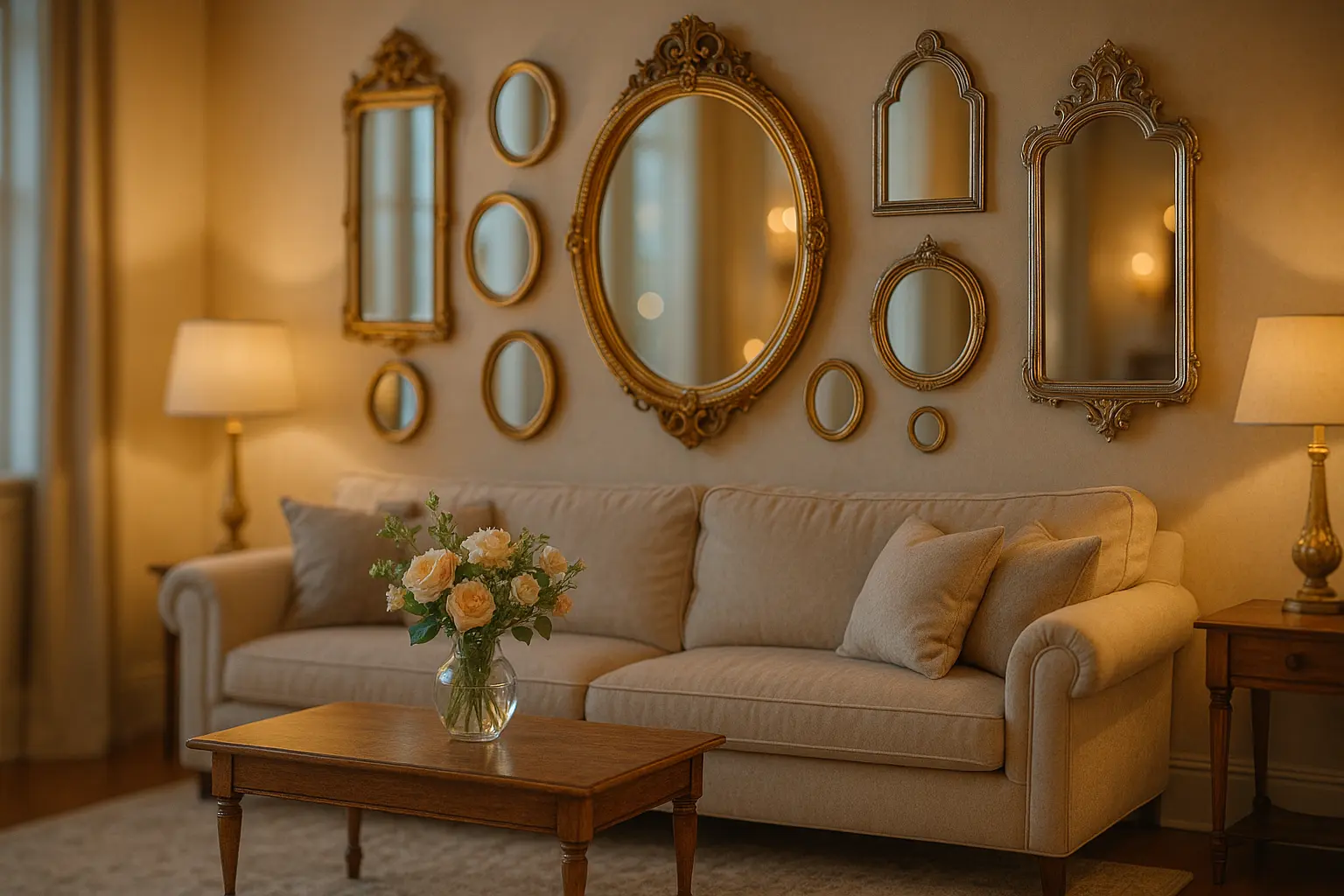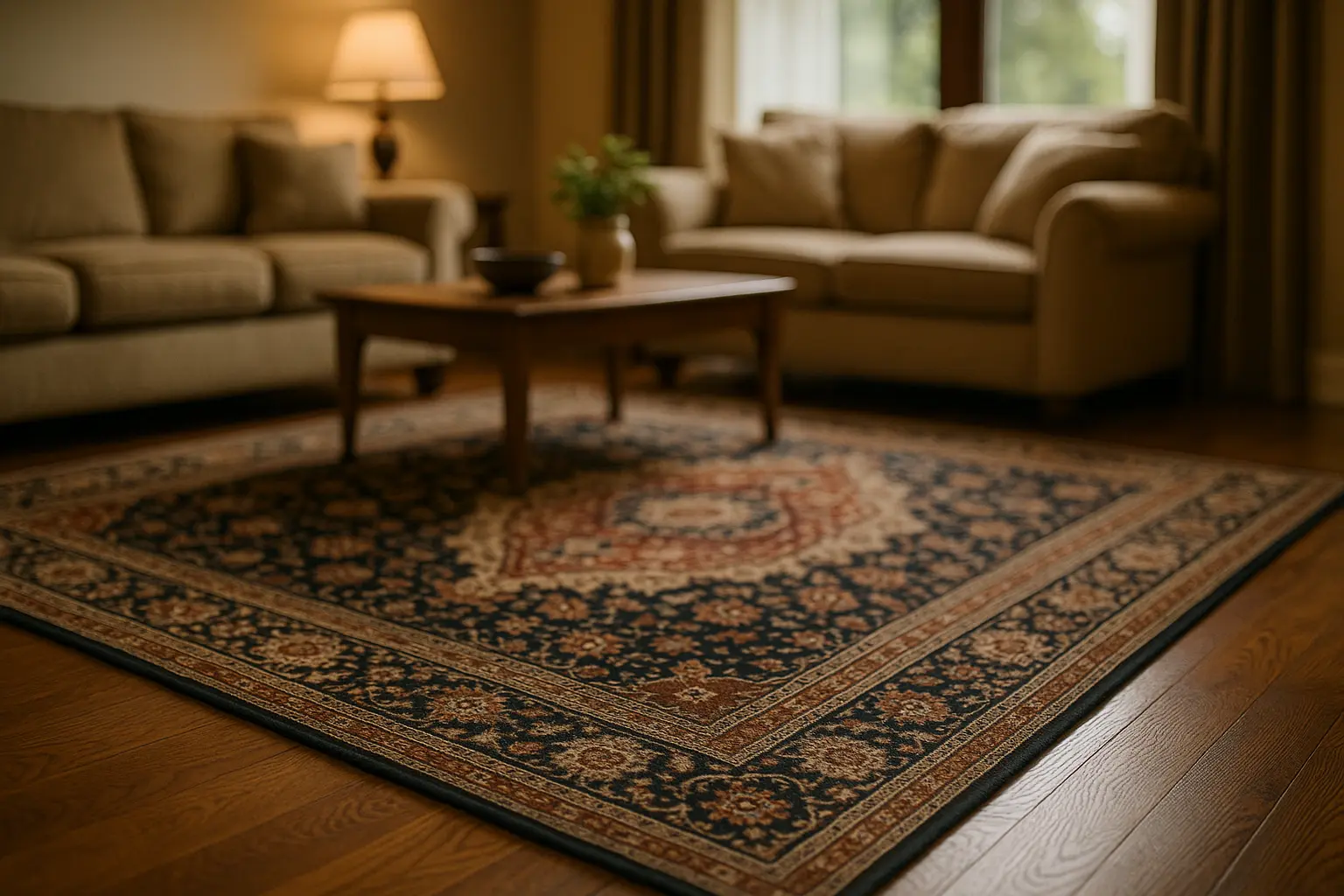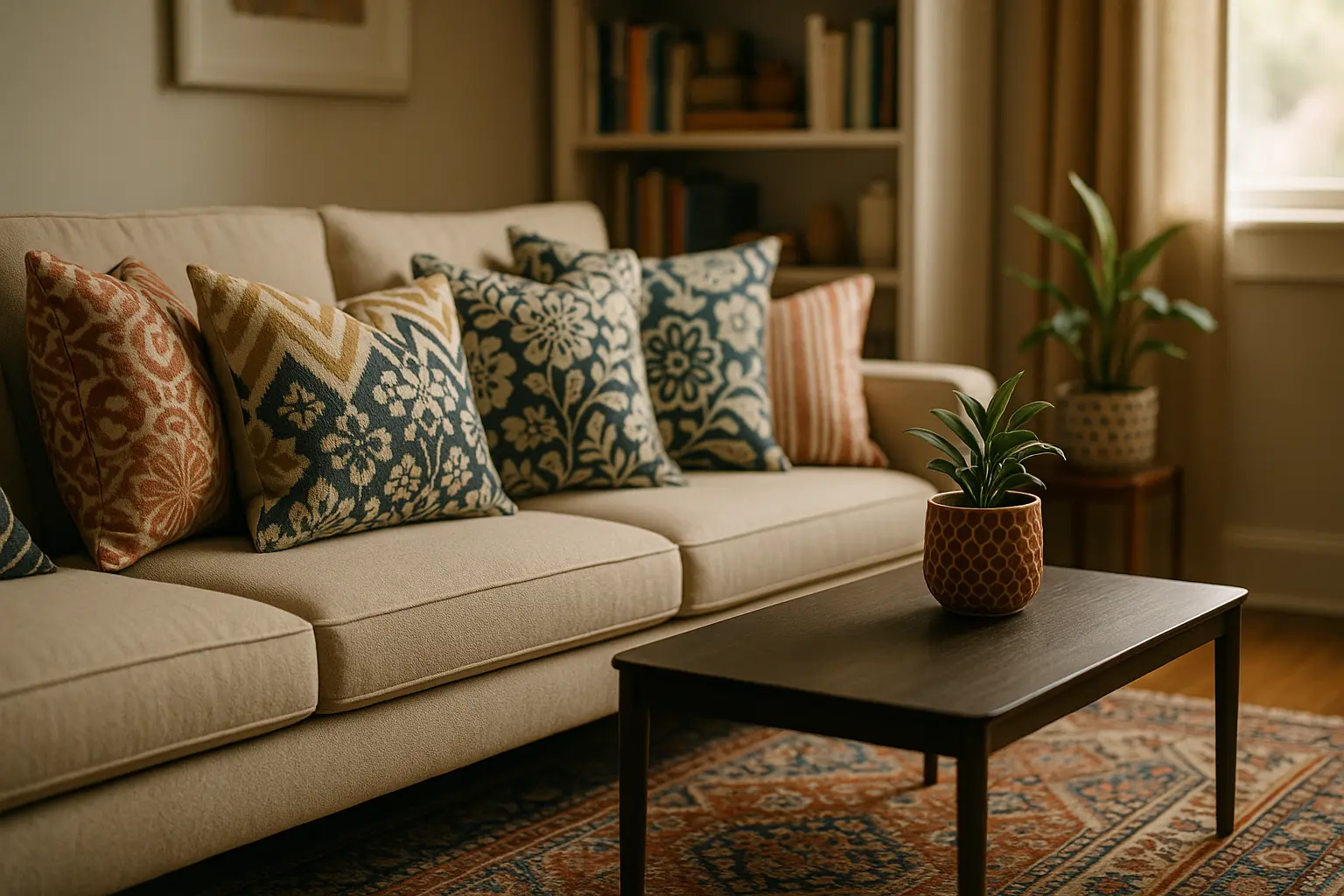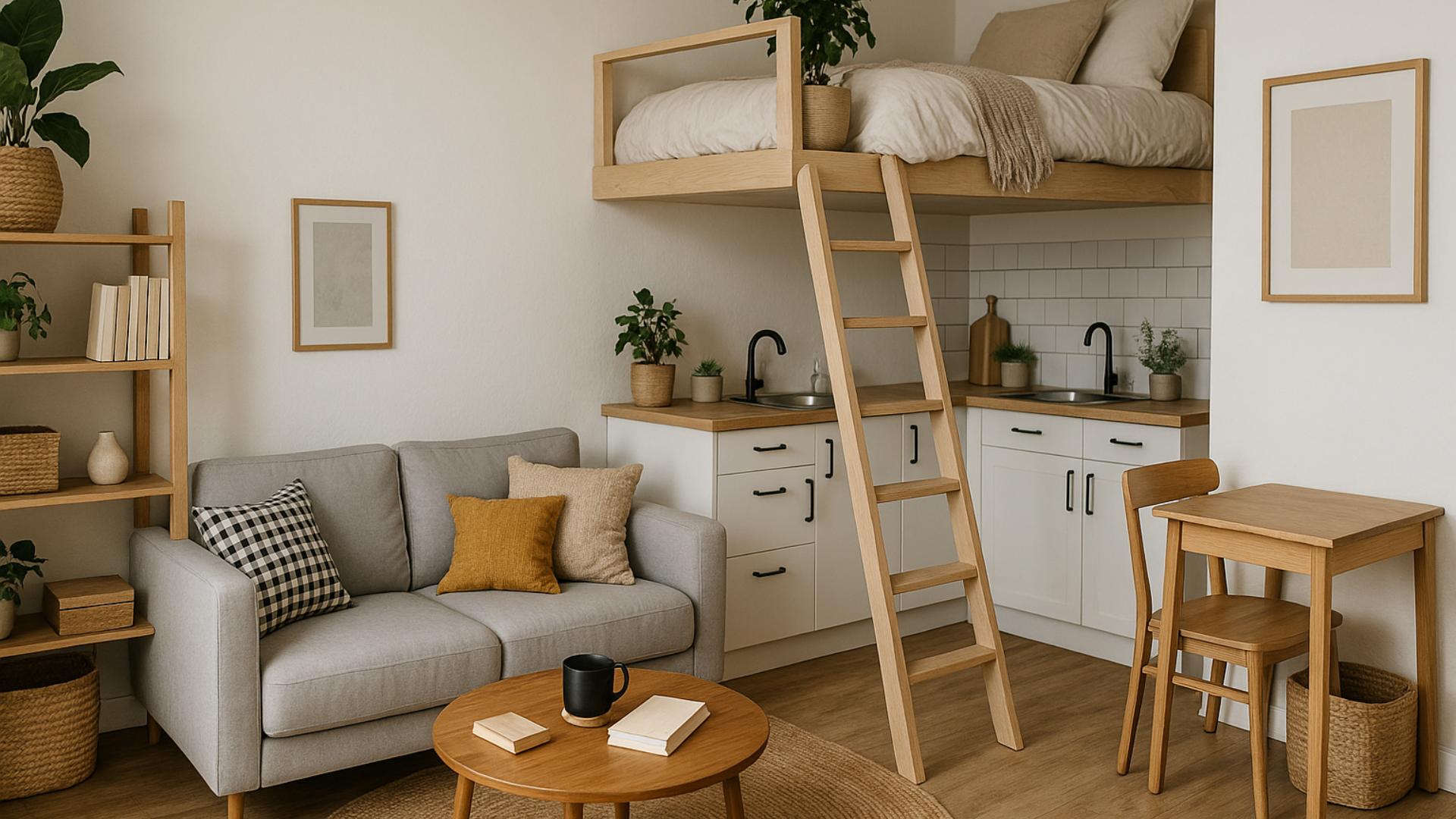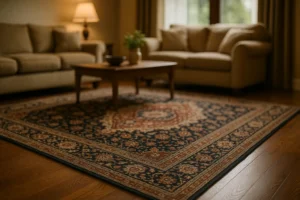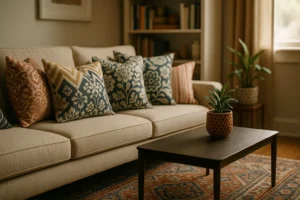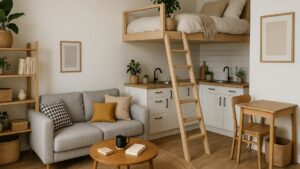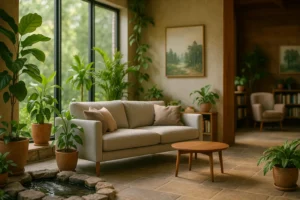How to Decorate with Mirrors
Mirrors: they’re not just for checking our reflections. These versatile pieces are transformative tools in interior design. Whether we’re looking to expand a small room, brighten up a dim corridor, or add a touch of elegance to our decor, mirrors can offer a solution that weaves together form and function. Today, as we delve into the art of decorating with mirrors, we’ll explore how to utilize these reflective wonders to enhance our spaces.
The Magic of Mirrors in Interior Design
Mirrors are more than just fixtures; they are canvases that reflect and amplify light, space, and style. By strategically placing mirrors, we can create illusions of grandeur even in the smallest of spaces. The right mirror can set the tone, mood, and ambiance of a room, acting as a bridge between art and functionality.
Expanding Space with Mirrors
In our often cramped urban dwellings, the quest for more space is relentless. Luckily, mirrors provide an inventive cheat sheet to create the illusion of a larger, more open environment.
Reflective Wonder: When we place mirrors opposite each other, they create an endless corridor of reflections, adding depth to rooms that otherwise feel confined. This technique is particularly effective in compact hallways or small living areas where space seems limited.
Strategic Placement: By installing a large mirror on a wall adjacent to a window, we can double the perceived space, drawing in light and extending the view. Such placement tricks the eye into seeing a bigger area, a handy tool in petite kitchens or cozy bedrooms.
Mirrored Furniture: Incorporating mirrored furniture like coffee tables, cabinets, and sideboards integrates function with illusion. These pieces reflect light and surrounding decor, blending seamlessly with any design style while maximizing the perception of space.
Frame it Right: The choice of frame can further amplify the spatial illusion. Slim, understated frames maintain the seamless flow of a room, whereas ornate frames can act as a focal art piece, creating a balance between space and style.
Through mindful decoration with mirrors, we can design rooms that don’t just reflect our taste but also highlight the hidden potential in every inch of space.
Illuminating Your Space with Mirrors
Light is an essential element of interior design, and mirrors are invaluable in harnessing this natural resource. They offer a creative and stylish way to introduce light into spaces that need a little brightening up.
Reflecting Natural Light: Positioning mirrors opposite or adjacent to windows is a classic trick employed by designers. This setup captures and multiplies the incoming sunlight, diffusing it throughout the room and reducing the reliance on artificial lighting. In dark hallways or basements, this technique can work wonders.
Creating a Glow: Decorative mirrors with backlighting or halo lights around them can add a soft glow and create a cozy atmosphere in the evenings. These mirrors serve a dual function – acting as both a light source and a decorative element.
Focal Points with Light: In spaces like living rooms or dining areas, mirrors paired with light fixtures such as chandeliers or pendant lights can enhance the aesthetic appeal. The light reflections create a dynamic interplay of shadows and highlights, adding depth and interest to the decor.
Mirrors in Unexpected Places: Incorporating mirrors in unexpected spots, such as at the back of a shelf or inside cabinets, can subtly amplify the light and space. These hidden reflections add a layer of intrigue and modern style to our home.
With a thoughtful approach, mirrors can be more than mere reflectors; they become enablers of light and energy, making our homes feel inviting and full of life.
Mirrors as Artwork and Statement Pieces
While mirrors often serve functional purposes, their potential as art pieces should not be underestimated. With an endless variety of shapes, sizes, and styles available, mirrors can become significant focal points in our homes.
Choosing a Statement Mirror: Selecting a mirror with a unique shape or intricate frame can transform it from a utilitarian object to a centerpiece. Geometric designs, antique frames, or abstract forms can complement a room’s style and become an expression of personality.
Gallery Wall with Mirrors: Mixing mirrors with art and photographs on a gallery wall can add dimension and interest. Different shapes and sizes create an eclectic and layered look, drawing the eye around the wall and adding depth to the overall decor.
Mirrors in Unexpected Forms: Incorporating mirrors into unexpected places like tabletops or as ceiling elements can elevate the design. These innovative uses illuminate surfaces and create a sense of whimsy and surprise.
Framing with Intention: The choice of frame is critical in defining a mirror’s role in a room. A rustic wood frame might lend a mirror to traditional or farmhouse decor, while a sleek metal frame could align with modern or industrial themes.
Mirrors, when used as art, can invite curiosity and conversation, adding an artistic flair that elevates the everyday into something extraordinary. Their reflective nature allows them to blend effortlessly into any theme, making them a versatile addition to our decorating toolkit.
Enhancing Room Styles with Mirrors
Mirrors hold the transformative power to align with and enhance various room styles. By understanding their impact, we can integrate them seamlessly into diverse aesthetics.
Classic Elegance: In traditional settings, mirrors with antique finishes or gold leaf frames can echo the room’s richness and sophistication. They reinforce the classic appeal, acting as bridges that tie together the furniture and decor.
Modern Minimalism: For a minimalist aesthetic, frameless mirrors or those with simple geometric frames add a sleek touch. They emphasize the clean lines and uncluttered nature of contemporary designs, reflecting the beauty in simplicity.
Bohemian Vibes: Incorporating mirrors with intricate patterns or textured frames can amplify the eclectic and carefree spirit of bohemian rooms. These mirrors add layers of texture and interest, enhancing the relaxed yet vibrant style.
Industrial Chic: In industrial spaces, mirrors with metal frames or those with a distressed finish can mirror the raw and rugged materiality of the surroundings, linking the decor elements.
From chic and modern to cozy and traditional, mirrors adapt easily, making them a perfect accessory to reflect and enhance our chosen style, while adding layers of depth and artistry.
Mirrors are more than mere reflections of our physical selves; they are reflections of our styles, tastes, and creativity. By thoughtfully incorporating mirrors into our interiors, we do more than just decorate; we transform spaces into works of art that tell stories.
Whether we’re making a small room feel open and airy, brightening a sun-starved corner, or adding an artistic flair, mirrors are essential tools in our decorating arsenal. They are versatile, timeless, and adaptable, offering endless possibilities for enhancing our homes.
As we look into the reflective surfaces of our mirrors, let us see them as partners in our design journey—companions that bring light, space, and beauty into our lives.
FAQ
How can mirrors be used to enhance the natural light in a room?
Mirrors can be strategically placed to reflect natural light from windows, thereby brightening dark corners and creating an open and airy atmosphere. Positioning them opposite or adjacent to windows can maximize their light-enhancing effect.
What is the best way to use mirrors to create the illusion of more space?
To make a room appear larger, place a large mirror on a prominent wall or use multiple smaller mirrors to create a gallery effect. This will reflect the room back on itself, giving the impression of expanded space.
Are there any design tips for using mirrors in small spaces?
In compact areas, opt for vertical mirrors to draw the eye upward and create a sense of height. Mirrors with decorative frames can also serve as statement pieces, adding character without taking up floor space.
How can mirrors be incorporated into a room’s existing decor style?
Choose mirrors that complement the room’s aesthetic. For a modern look, sleek, frameless mirrors work well, while ornate or vintage frames suit more traditional or eclectic spaces. Consider the colors and textures of the room when selecting a mirror style.
Where should mirrors be avoided to prevent negative effects in a room’s decor?
Avoid placing mirrors directly facing beds or in areas where they might reflect clutter, as this can create visual chaos or unease. Instead, position them where they enhance the room’s best features without overwhelming the space.
